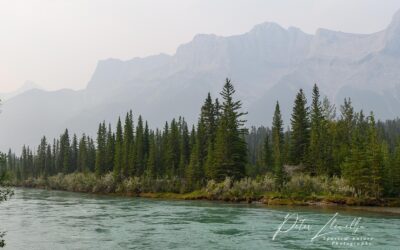Generally my ‘how to’ articles have concentrated on obtaining the sharpest images possible. That’s great, up-to-a-point, as the majority of my published images need to fit exactly that criteria. But, after you have captured all the usual images of your subject showing it in all it’s pin sharp glory, it’s time to look beyond the norm and start getting more creative.
In a follow-on from my previous blog where I started to look at the similarities between sports and wildlife photography, the techniques used for movement blurs in both subjects are identical.
Movement blur is simply allowing your camera shutter to remain open long enough to allow movement of your subject (or of the camera) to register on the sensor.
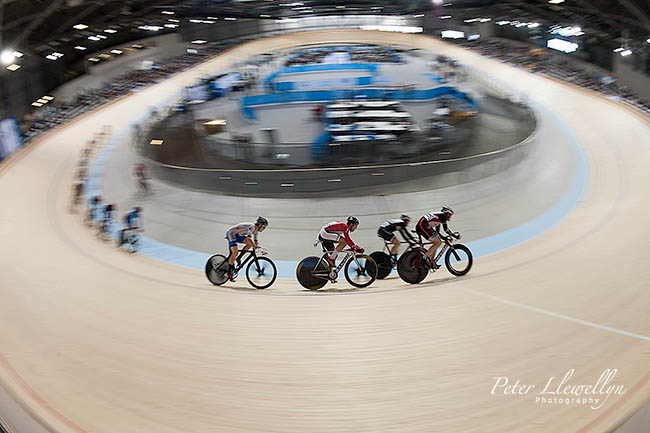
Milton International Challenge, Cisco PanAm Velodrome, Track Cycling International – Mens Omnium Points event
Nikon D3s, 16mm f2.8 fisheye lens hand held, 1/6oth @ f8 ISO 640 Note that by keeping the nearest cyclist centred in frame he remains quite sharp while all the other competitors are blurred
Let’s look at some of the methods to induce that sense of movement into your still images.
Creative blurs using long exposure with subject moving
There are effectively two methods you can use with a long exposure technique, keeping the camera still while the subject moves, or moving the camera (panning) whilst keeping the subject centred in the frame – or you can combine the two.
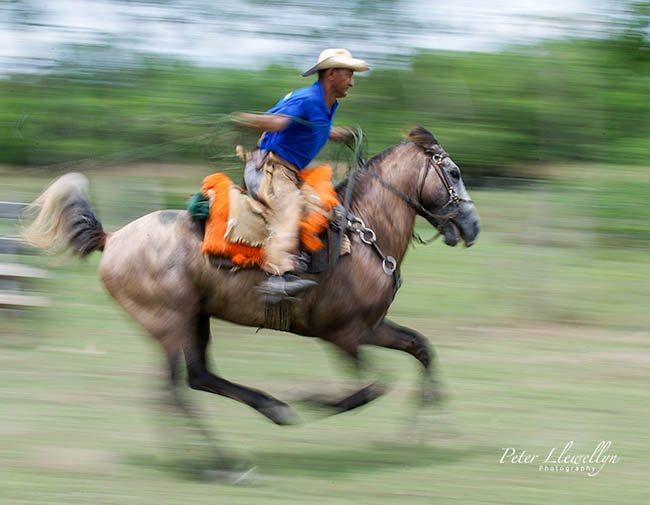
Pantaneiro cowboys working cattle, The Pantanal, Mato Grosso, Brazil
Nikon D3 with 80-200mm f 2.8 lens @ 80mm hand held, 1/30th sec @ f22 ISO 200 – Here I have used both a slow shutter speed and a panning action. The slow shutter produced the movement in the subject, the panning the movement in the background
This is perhaps the most common technique to induce deliberate blur where the photographer choses a shutter speed sufficient to render a recognizable subject but, at the same time, the shutter is open long enough for movement to register on the image. The trick is in choosing what stutter speed to use and for this you need first to assess how quickly your subject is moving. Obviously a formula one race car move quicker than a galloping horse which in turn is quicker than grass stems being blown in the wind.

Pronghorn Antelope (Antilocapra americana), Sand Wash Basin, Colorado, USA
Nikon D3, 200-400mm f4 lens @ 360mm, 1/125th sec @ f16, ISO 200 In this image I have used a relatively fast shutter speed but the foreground blur imparts a great sense of movement. This was shot through a vehicle window whilst travelling at around 50 mph (80 kph)! The Pronghorn is renowned as the fastest land animal in the Americas.
If you are using a long shutter speed to capture movement, for example moving water, it is absolutely essential to lock the camera down on a solid tripod. The long exposure will exacerbate any camera movement. To ensure there is no camera shake it is best to either use a cable release or to lock the mirror up and use the camera’s self timer to trigger the shot.
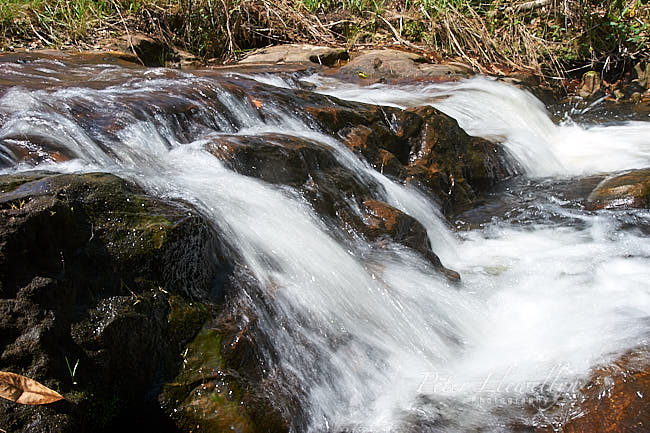
Waterfall, Chapada National Park, , Mato Grosso, Brazil
Nikon D3, 20-35mm f2.8 @ 35mm, 1/15 sec @ f22 ISO 100. Gitzo carbon fibre tripod, Arca Swiss ball head
What shutter speed?
So, what shutter speed do you need to create motion blur – the answer is ‘it depends’. If the speed is too short you still end up freezing the subject or it has minimal blur which just doesn’t work well. If too long then the subject itself becomes too blurry to be recognizable for what it is. Other factors will also come into play such as the angle your subject is moving. Is it toward you , diagonal, away etc. each of which causes a different apparent speed of motion. Are you, the photographer standing still or are you moving i.e. in a vehicle?
Note that, the further away you are from your subject, the easier it is to pan and follow, keeping the subject in the same location in the viewfinder. The plain fact is you need to experiment a little for each subject you shoot – exactly what that little screen on the back of the camera is for!
However here are some starting points:
- Birds in flight to create some wing blur – 1/125 sec
- Panned action for cars, cyclists, and animals at full gallop – 1/30 sec
- Sports action featuring people, basketball, athletes etc. 1/60 sec
Remember that these are just indicators, you will still need to experiment for yourself.
I am not including star trails etc as this is a whole other subject. Similarly I am not going into rear curtain flash – I will again write about this in a separate article.
Long exposure while moving the camera
The second common method of creating movement blur is when the subject is still (or relatively so) but you deliberately move the camera during the exposure.
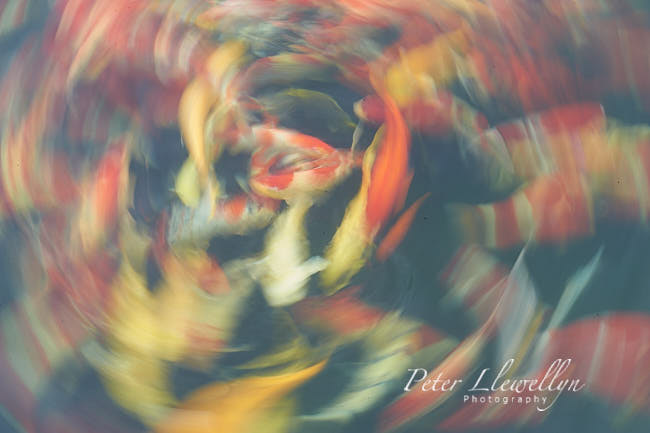
Koi carp in pond, Nan Lian Garden, Kowloon, Hong Kong
Nikon D3, 105mm f2.8 Micro lens, 1/8sec @ f32, ISO 100. Here I have used a twisting motion to rotate the camera and lens whilst taking the photo. Note how the fish near the centre are rendered relatively still whilst the further you look to the outside of the frame there is increased blur.
There is a huge range of movement you can introduce, rotation, up and down , side-to-side each of which will introduce a different blur effect. Also experiment with the same movement and different shutter speeds to find which works best.
Exposure
As creative blurs require longer exposures than normal you need to take care with not to overexpose your photos. In general keep the ISO settings as low as possible and use small aperture to allow for longer shutter speeds without over-exposing. On bright sunny days even then you may not be able to set a long enough shutter speed to achieve the desired effect. This is where the use of a neutral density filter comes into it’s own. Neutral density filters cut the amount of light coming through the lens without altering the colours. These are available in a range of density settings but I recommend owning having one of the darkest, perhaps a -6 stop. This way you can always open the aperture or raise the ISO if you need a slightly faster shutter speed. If you don’t have a dark enough ND filter you have fewer options to slow the shutter down.
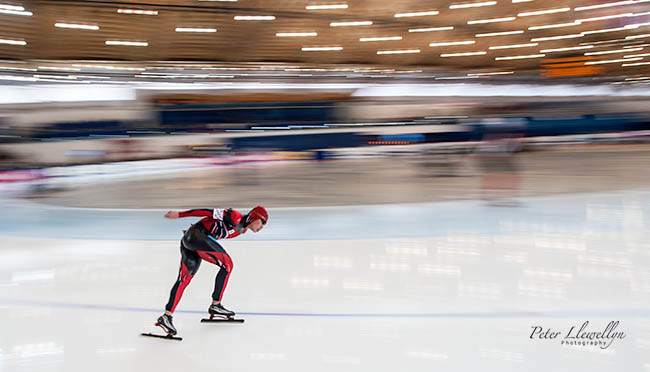
World Single Distance Speed Skating Championships, Richmond Olympic Oval BC, Canada, Mens 10,000m, Hiroki Hirako (JAP)
Nikon D3s, 20-35mm f2.8 lens @20mm hand held, 1/30 sec @ f4, ISO 200. Here due to the light levels it was not necessary to use a small aperture to achieve the desired slow shutter speed.
Sensor dust
Here, a word of warning. Your sensor must be scrupulously clean when taking long exposures. Almost invariably you will be using small apertures which have the effect of sharply focussing every tiny scrap of dust on the sensor. If I know I am going to be taking long exposure shots I will always clean ny camera sensors before going out.
To see more creative blurs search the online archive by entering keywords in the search box below.


